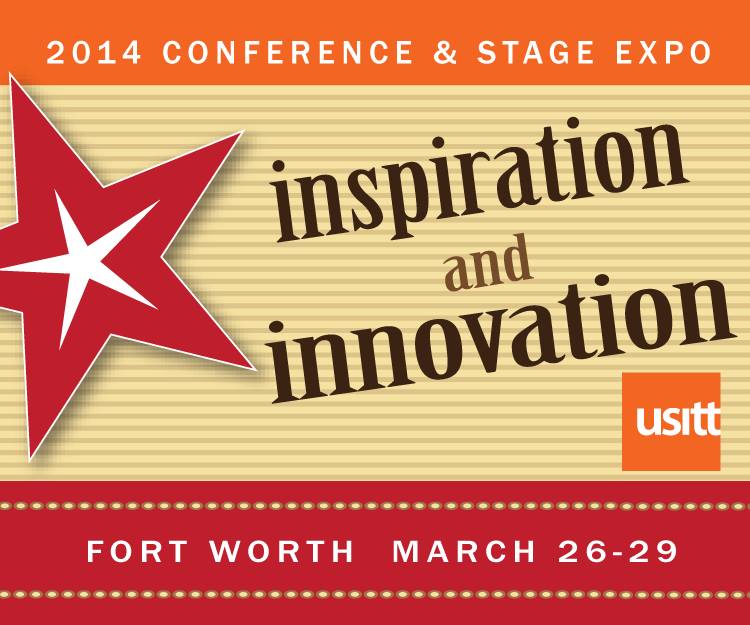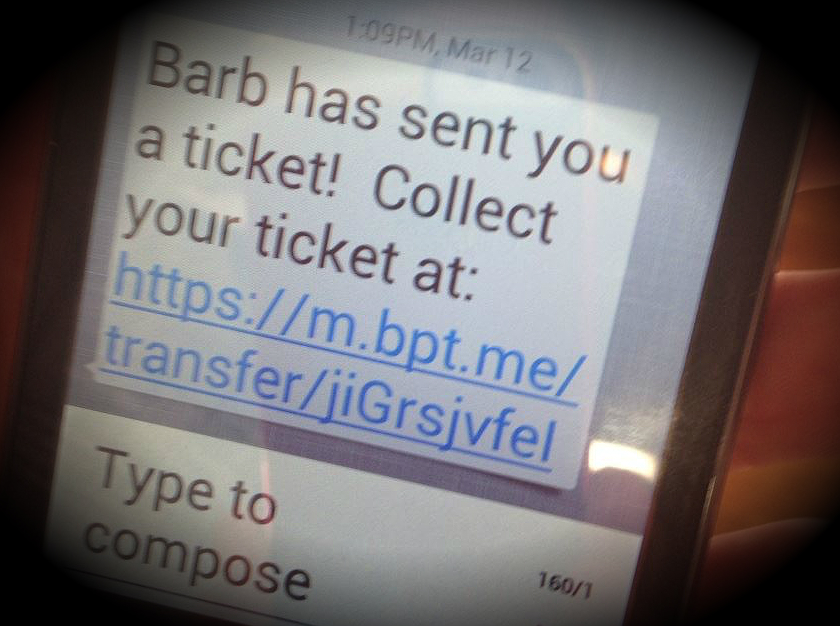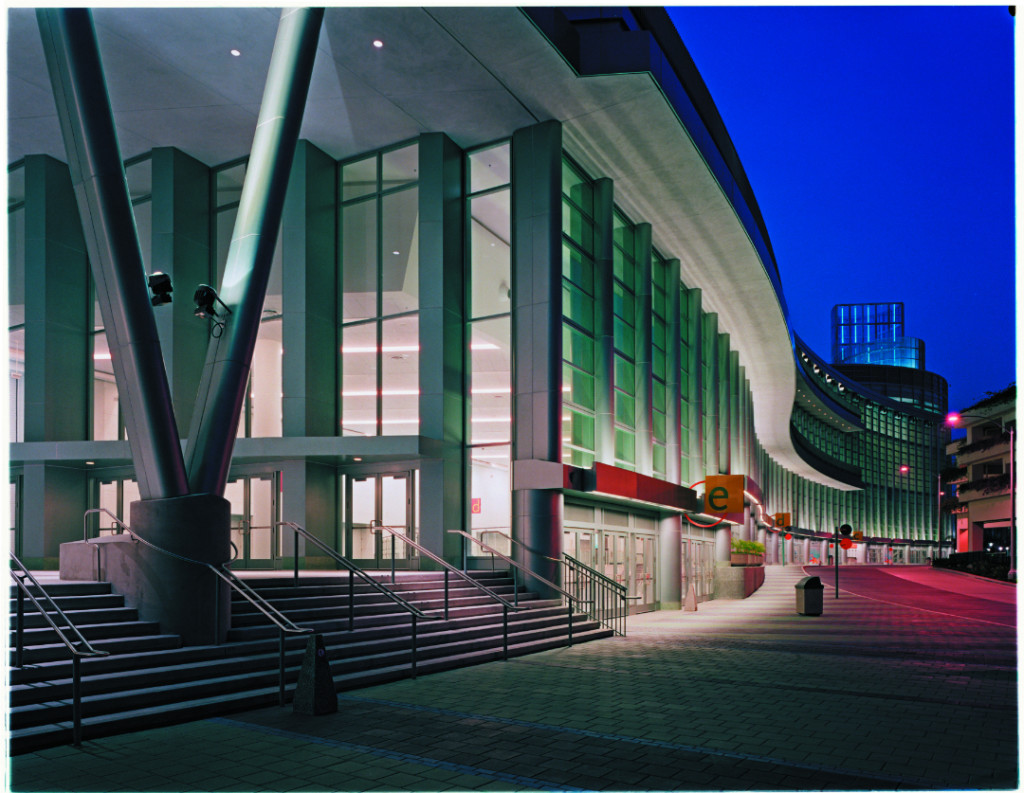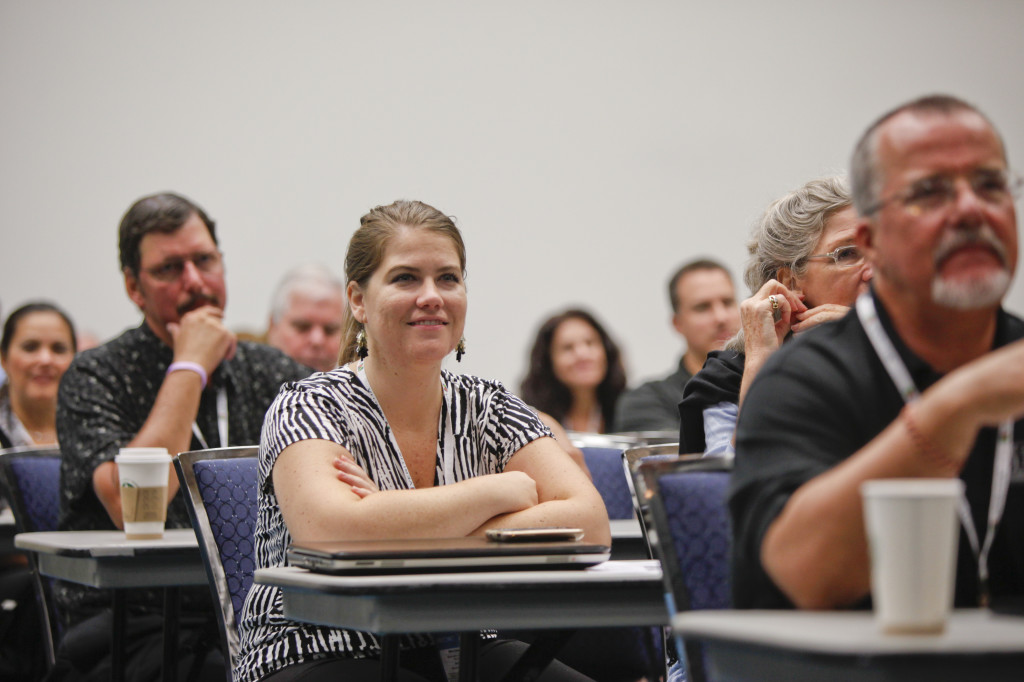Attend Stage Expo This Year for Free as a USITT Guest
There’s an upcoming event that I think many you may be interested in attending, especially if you’re in the North Texas area. It’s called the USITT Annual Conference & Stage Expo, and it will feature more than 12 areas of education and meetings for every specialty skill in the entertainment and theater industries. It all takes place March 26-29 at the Fort Worth Convention Center.
“In looking at what might interest IAVM members, sessions such as ‘Life Safety Management – Crowd Manager,’ ‘Creating Safety Plans,’ and ‘Death by Meeting’ (lead by one of the folks from Disney) are natural fits,” said Barbara E.R. Lucas, USITT director of communications & Sightlines editor. “Others, which include ‘You can almost hear the OSHA’ are also important. ‘Egress Lighting’ from our Architecture Commission may not be the session that draws the biggest crowd, but our attendees are looking forward to its insights. It is a collaboration of our Architecture, Engineering, and Safety & Health commissions.”
What’s more, IAVM members also have a great opportunity to learn about new products and resources at Stage Expo as a USITT guest. Visit www.usitt.org/iavm to register for the expo for free.
(Image: From the USITT Facebook page)
Using SMS Mobile Text to Send Tickets to Your Friends
In an upcoming issue of FM magazine, we’ll have a feature about Brown Paper Tickets, a Seattle-based company that works behind the philosophy of “not just for profit.” It’s a great story and one I’m looking forward to having you read.
While you’re waiting on that, though, I thought I’d share another story from Brown Paper Tickets and a cool new application it has developed. It’s called Transfer-to-a-Friend™, and it’s a patent-pending tool for digitally transferring tickets and event registration via SMS mobile text.
“Our goal was to create the simplest user experience possible. No downloads. No forced presence on your smart phone. Nothing unnecessary. Just practical, fast delivery,” said William S. Jordan, president and chief technology officer of Brown Paper Tickets. “We think that relationships of all kinds should be because you want to have them, not because you are forced into it. That’s why we have never required any contracts with venues. We actually prefer to earn our relationship with every customer every day.”
 Here’s how the transfer application works. Fans who purchase mobile tickets can view them on any Web-enabled device and touch “Transfer-to-a-Friend” to be prompted to enter a destination country and mobile phone number. Transfer-to-a-Friend sends a text message, including the name of the original ticket buyer, inviting the recipient to collect the ticket. With one touch the transfer is complete, if the recipient is logged into their Brown Paper Tickets account. If not, the receiving fan can choose to log in, or create an account, and the ticket is transferred.
Here’s how the transfer application works. Fans who purchase mobile tickets can view them on any Web-enabled device and touch “Transfer-to-a-Friend” to be prompted to enter a destination country and mobile phone number. Transfer-to-a-Friend sends a text message, including the name of the original ticket buyer, inviting the recipient to collect the ticket. With one touch the transfer is complete, if the recipient is logged into their Brown Paper Tickets account. If not, the receiving fan can choose to log in, or create an account, and the ticket is transferred.
Ticket holders can also re-transfer their tickets, or organize a group to attend any event together by purchasing several tickets, and using Transfer-to-a-Friend to text message them to as many friends as they wish. The tickets are automatically distributed to friends as they claim them, on a first-come, first-served basis.
“I was attending a show and had bought tickets for friends who were running late,” Jordan said. “There was that moment that many people have probably experienced, where I really, really wanted to go into the show and yet I didn’t want to let down my late friend. And I thought, ‘There really should be an easy solution for this.’ So, I went home and created it for Brown Paper Tickets.”
The company said that more than 10,000 ticket buyers have already used the transfer tool. I, for one, look forward to using it at a future event. What about you? What do you think of this new tool? Please share your thoughts in the comments section.
(Images: Brown Paper Tickets)
Where You Can Meet Like-minded Industry Leaders
Applications for the 2014 Senior Executive Symposium (SES) close on March 31. This year’s focus is on leadership culture, and sessions will cover topics such as diversity in the workplace, ethical dimensions of leadership loyalty and brand management, and applied HR strategies. The curriculum is co-developed by IAVM and Cornell University, and it’s geared toward senior-level venue managers and other individuals on leadership tracks.
“SES provides an Ivy League-caliber professional development experience for hospitality management customized for the venues industry,” said IAVM memer and past SES attendee Tony Pereira. “It’s really a one-of-a-kind opportunity.”
Pereira, senior director of ballpark operations for Safeco Field/Seattle Mariners, said that attending SES was an overall reminder each year that the world we operate our businesses in is ever-changing.
“A personal commitment to continued learning is imperative,” he said. “SES is a great resource with which to fulfill that commitment. As a rotating three-year program, each year brings new attendees, and with it, the opportunity to make contacts with like-minded industry leaders.”
If you’d like the opportunity to meet with like-minded leaders, please consider attending SES this year, May 12-15, in Ithaca, New York.
Anaheim Convention Center Expansion Meets Approval
The Anaheim Convention Center expansion was approved by the city council on Tuesday night. The 200,000-square-foot expansion will cost $180 million and will begin this summer. It is set to be completed by fall 2016.
“The feedback from potential clients like the American Heart Association has been incredible because they feel an ownership in helping to create this,” said Jay Burress, president and CEO of the Anaheim/Orange County Visitor & Convention Bureau, in an article in the Orange County Register. “They’re thrilled when we show our plans and they’re clamoring to try to get that space. This really puts us back in the game in a lot of ways and keeps us competitive.”
After completion, the convention center will offer 1.8 million square feet of rentable space.
Please visit the Orange County Register for more coverage about the expansion.
(Image: Anaheim Convention Center)
iCommit: Building an Even Stronger IAVM
Just a little over two weeks left for the IAVM’s get-a-member campaign, iCommit. The goal is to increase the association’s membership by adding 500 new members by March 31. This would take IAVM to an unprecedented community of 4,700 members. More members means more collaboration, a bigger and more diverse network for you, and a greater pool of experts to create inspiring and motivating educational sessions at conferences.
We are 4,200 members strong today. What we need each member to do: Refer just one new member. Do you know any potential superstars that will benefit by being a part of our tremendous network? If you do, we can easily reach our goal by March 31!
Will you commit to building a stronger association and a bigger network of like-minded leaders? We hope so! You did an amazing job last year and helped us achieve record numbers. Let’s do it again. Please forward this email to any of your referrals.
You Can Win For Your Efforts!
 Besides feeling good about supporting and helping to grow the industry, for each new member that you refer who actually joins IAVM, your name will be entered into a raffle to win one of five $500 Apple gift cards (generously provided by Ungerboeck Software) to apply toward the purchase of any Apple product including an iPad, iPhone, or iPod—your choice.* The more members you bring in to IAVM, the more chances you have to win. Hurry—March 31, is the deadline.
Besides feeling good about supporting and helping to grow the industry, for each new member that you refer who actually joins IAVM, your name will be entered into a raffle to win one of five $500 Apple gift cards (generously provided by Ungerboeck Software) to apply toward the purchase of any Apple product including an iPad, iPhone, or iPod—your choice.* The more members you bring in to IAVM, the more chances you have to win. Hurry—March 31, is the deadline.
To ensure you are eligible to win, make sure the new member who joins lists your name in the Applicant Section titled “Who Recommended IAVM To You?” and enters “iCOMMIT” in the Promotional Code field in the Payment Method section of the membership applications. Your referral will save the one-time initiation fee up to $150.00.
If you have questions, please contact me or Summer Beday, member care manager, at 972.906.7441, or membership@iavm.org. We value and appreciate your support of IAVM!
*iPAD, iPhone, iPod not included
(Image: Orange Photography)
Do you want to receive a Front Row News weekly digest?
Categories
- Allied (861)
- Architecture (147)
- Arenas (747)
- Career (897)
- Convention Centers (895)
- Education (623)
- Events (1,544)
- Food & Beverage (193)
- Foundation (113)
- Guest Experience (1,496)
- Industry News (2,270)
- Leadership (1,888)
- Marketing (150)
- Membership (2,000)
- Music (213)
- Performing Arts Centers (454)
- Professional Development (409)
- Research (127)
- Safety & Security (442)
- Sports (763)
- Stadiums (608)
- Student (159)
- Technology (516)
- Ticketing (92)
- Touring (82)
- Trends (364)
- Uncategorized (743)
- Universities (218)
- Video (25)
- Young Professional (198)
Twitter Feed
- Twitter feed loading
Recent Posts
- Venuworks and ATG Entertainment Selected to Manage Fresno Convention and Entertainment Center
- Seattle Convention Center Announces Strategic Leadership Appointment and Growth Initiatives for 2026
- Peggy Daidakis Humbly Made Convention Center History
- Welcome to Our Newest Members
- New Member Benefit! IAVM Partners with Advantage Training to Elevate Staff Readiness and Guest Experience
Categories
- Allied
- Architecture
- Arenas
- Career
- Convention Centers
- Education
- Events
- Food & Beverage
- Foundation
- Guest Experience
- Industry News
- Leadership
- Marketing
- Membership
- Music
- Performing Arts Centers
- Professional Development
- Research
- Safety & Security
- Sports
- Stadiums
- Student
- Technology
- Ticketing
- Touring
- Trends
- Uncategorized
- Universities
- Video
- Young Professional
Archives
- December 2025
- November 2025
- October 2025
- September 2025
- August 2025
- July 2025
- June 2025
- May 2025
- April 2025
- March 2025
- February 2025
- January 2025
- December 2024
- November 2024
- October 2024
- September 2024
- August 2024
- July 2024
- June 2024
- May 2024
- April 2024
- March 2024
- February 2024
- January 2024
- December 2023
- November 2023
- October 2023
- September 2023
- August 2023
- July 2023
- June 2023
- May 2023
- April 2023
- March 2023
- February 2023
- January 2023
- December 2022
- November 2022
- October 2022
- September 2022
- August 2022
- July 2022
- June 2022
- May 2022
- April 2022
- March 2022
- February 2022
- January 2022
- December 2021
- November 2021
- October 2021
- September 2021
- August 2021
- July 2021
- June 2021
- May 2021
- April 2021
- March 2021
- February 2021
- January 2021
- December 2020
- November 2020
- October 2020
- September 2020
- August 2020
- July 2020
- June 2020
- May 2020
- April 2020
- March 2020
- February 2020
- January 2020
- December 2019
- November 2019
- October 2019
- September 2019
- August 2019
- July 2019
- June 2019
- May 2019
- April 2019
- March 2019
- February 2019
- January 2019
- December 2018
- November 2018
- October 2018
- September 2018
- August 2018
- July 2018
- June 2018
- May 2018
- April 2018
- March 2018
- February 2018
- January 2018
- December 2017
- November 2017
- October 2017
- September 2017
- August 2017
- July 2017
- June 2017
- May 2017
- April 2017
- March 2017
- February 2017
- January 2017
- December 2016
- November 2016
- October 2016
- September 2016
- August 2016
- July 2016
- June 2016
- May 2016
- April 2016
- March 2016
- February 2016
- January 2016
- December 2015
- November 2015
- October 2015
- September 2015
- August 2015
- July 2015
- June 2015
- May 2015
- April 2015
- March 2015
- February 2015
- January 2015
- December 2014
- November 2014
- October 2014
- September 2014
- August 2014
- July 2014
- June 2014
- May 2014
- April 2014
- March 2014
- February 2014
- January 2014
- December 2013
- November 2013
- October 2013
- September 2013
- August 2013
- July 2013
- June 2013
- May 2013
- April 2013
- March 2013
- February 2013
- January 2013
- May 2012
- March 2012
- December 2011
- November 2011
- October 2011
Recent Comments
- Frank Bradshaw, Ph.D., CVE on John Meyer, CVE, a Tireless Advocate of Certification for Venue Professionals, Has Died
- Neil Sulkes on Hilary Hartung, Friend to Many in Venue Marketing, Has Left Us
- Jason Parker, CVE on The Devastation of Hurricane Helene and How We Can Support One Another
- Larry Perkins on Touhey Testifies Against Speculative Ticketing Before Congressional Subcommittee
- Peter Secord on Major Players for Planned Elkhart Amphitheater Were in the Mix at VenueConnect





